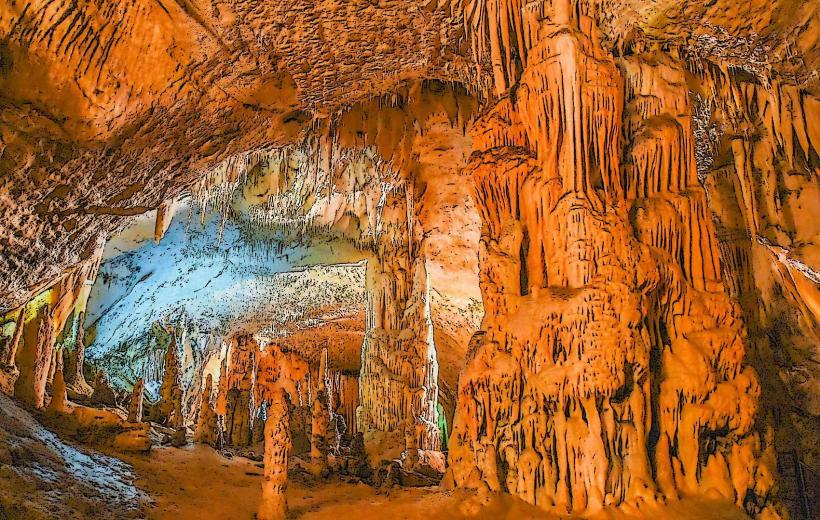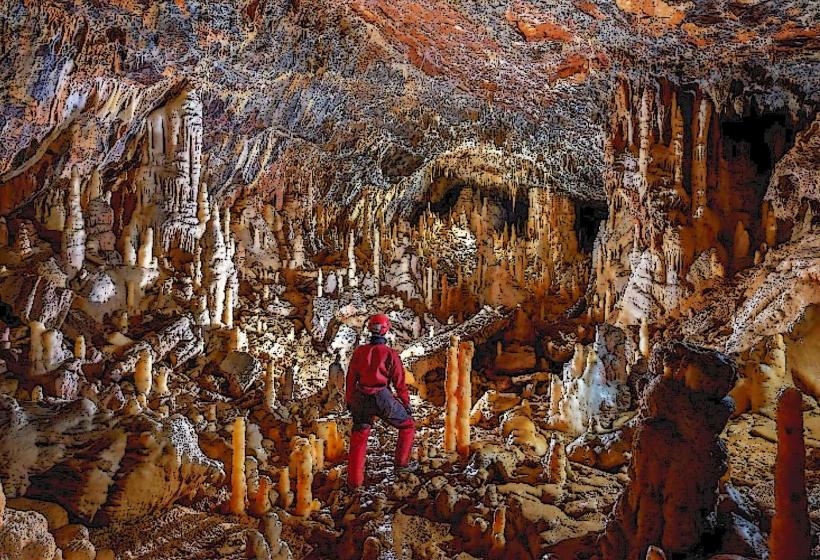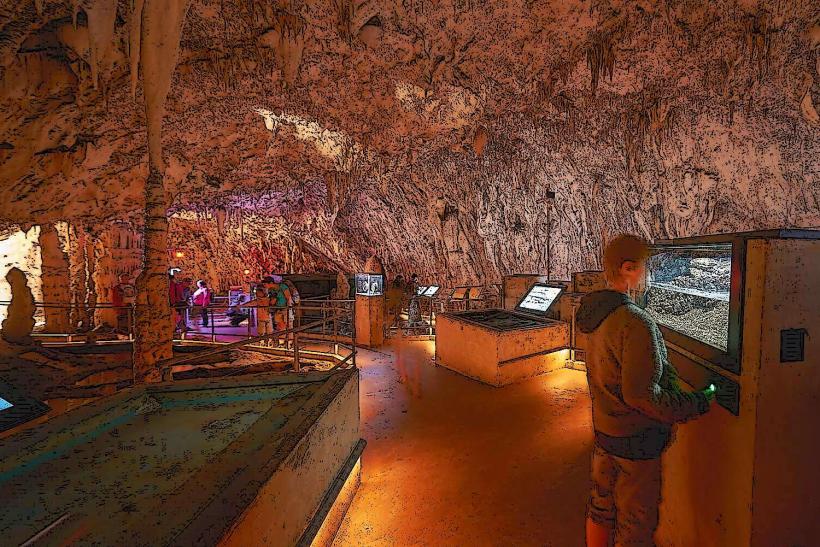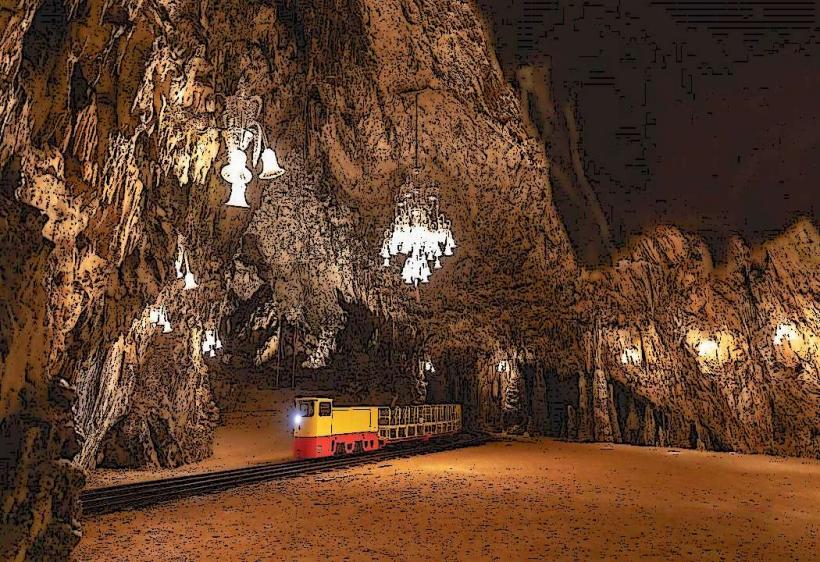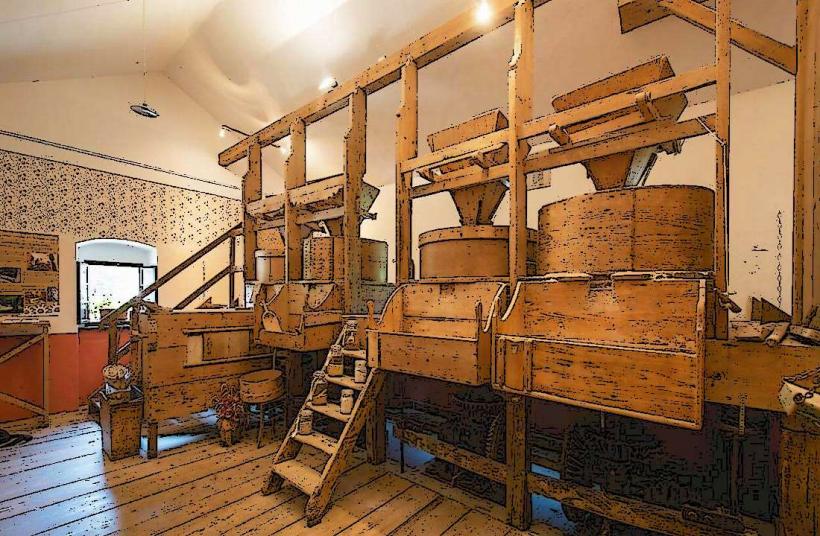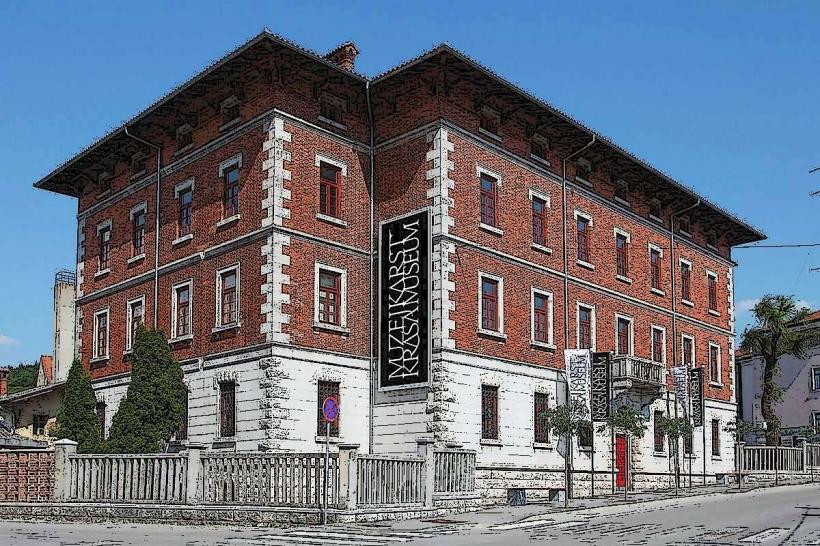Information
Landmark: Škocjan CavesCity: Postojna
Country: Slovenia
Continent: Europe
The Škocjan Caves (Slovenian: Škocjanske jame) are one of the most significant natural landmarks in Slovenia and are recognized as a UNESCO World Heritage Site. Located in the southwestern part of the country, near the town of Divaca, the caves are known for their stunning underground chambers, impressive stalactite and stalagmite formations, and the large Rakov Škocjan river canyon that flows through them. The Škocjan Caves are part of the Karst region, an area famous for its unique limestone landscapes shaped by erosion.
General Overview
- Location: The Škocjan Caves are situated in the Karst Plateau in southwestern Slovenia, approximately 30 km from Trieste (Italy) and 20 km from Koper, a coastal town in Slovenia.
- Discovery and Research: The caves were first explored in the 19th century, though their importance was recognized much earlier. The area around the caves has been a subject of geological and archaeological research due to its unique features and rich history.
- UNESCO World Heritage Site: In 1986, the Škocjan Caves were inscribed as a UNESCO World Heritage Site for their outstanding universal value, both for their geological features and their historical significance. The caves are particularly renowned for their size and the extraordinary landscape they create.
Geological Features
The Škocjan Caves are part of a massive underground system formed by the erosion of the Rakov Škocjan River. The caves are characterized by vast chambers, deep canyons, and a complex network of tunnels and passages that extend over several kilometers.
River and Canyon: The Rakov Škocjan River is the main watercourse running through the caves. Over thousands of years, the river has carved deep gorges and passages into the limestone rock. The river is one of the largest underground rivers in Europe and flows through the Škocjan Caves, adding to their dramatic scenery.
Large Chambers: One of the most impressive features of the Škocjan Caves is the Martel Chamber, which is one of the largest known underground chambers in Europe. This chamber is 120 meters long, 60 meters wide, and 50 meters high, and it is a breathtaking sight for visitors.
Stalactites and Stalagmites: The caves are filled with stalactites, stalagmites, and other mineral formations, many of which have formed over millions of years. These formations create a fairy-tale-like environment within the caves, with intricate and beautiful structures that captivate visitors.
Underground Waterfalls: Visitors can also see some of the caves’ underground waterfalls, where water flows through narrow passages and cascades into deep pools.
Flora and Fauna
Despite the caves being a harsh underground environment, the area around the caves is rich in diverse ecosystems:
- Cave Life: The caves are home to several species of bats, including the greater horseshoe bat, which uses the caves as a roosting and breeding site. Some other cave-dwelling species, such as crustaceans and insects, have adapted to the darkness of the cave system.
- Surrounding Landscape: The surrounding Karst region features a range of ecosystems, from limestone cliffs and karstic grasslands to mixed forests. This diverse landscape is home to species like wild boar, foxes, and deer, as well as a wide variety of bird species.
Cave Tours and Visitor Experience
The Škocjan Caves are a popular destination for tourists, and several guided tours are available to explore the fascinating underground world. Some details about visiting the caves include:
Guided Tours
- Underground Tour: The main attraction is the underground tour, which takes visitors through the cave system. During the tour, visitors walk through the cave’s tunnels, admire the stalactites and stalagmites, and witness the impressive Martel Chamber and underground river. The tour lasts about 1.5 to 2 hours and covers roughly 1.5 km of the cave system.
- Educational Aspect: The tour is both scenic and educational, as visitors learn about the cave's geological history, the formation of the underground river, and the species that inhabit the caves.
Aboveground and Surrounding Areas
- Rakov Škocjan Valley: The area above the caves is also a part of the park and includes the Rakov Škocjan Valley, which is a karstic landscape known for its natural beauty, including natural bridges, dry riverbeds, and unique flora and fauna. The Little Natural Bridge and the Big Natural Bridge are two notable features in the valley.
- Guided Hiking: In addition to the cave tours, there are hiking trails around the Škocjan Caves, providing visitors with a chance to explore the surrounding landscapes, which are equally stunning.
Facilities
- Visitor Center: The Škocjan Caves Visitor Center provides educational exhibits, information about the cave system, and a range of services for tourists, including a café and souvenir shop.
- Accessibility: While the caves are a fascinating site, the terrain within the cave system can be challenging. The tours are not recommended for individuals with mobility issues, and visitors should wear comfortable footwear. However, the visitor center and surrounding areas are accessible to most visitors.
Best Time to Visit
The best time to visit the Škocjan Caves is during the spring (April to June) and autumn (September to November), when the weather is mild, and the caves are less crowded. Summer months (July and August) can be busier, as the caves attract many tourists, but the weather remains pleasant. Winter is less popular due to colder temperatures and fewer tour operations, but it offers a quieter experience.
Nearby Attractions
- Lipica Stud Farm: Located nearby, the Lipica Stud Farm is home to the famous Lipizzaner horses and offers visitors the opportunity to learn about the breeding and history of this iconic breed.
- Postojna Cave: Another nearby cave system, the Postojna Cave, is one of Slovenia's most famous and also a UNESCO World Heritage Site. It is known for its massive underground chambers and the famous baby dragons (olm), a type of cave salamander.
- Trieste: Just across the border in Italy, the coastal city of Trieste offers a mix of history, architecture, and beautiful views of the Adriatic Sea.
Conclusion
The Škocjan Caves are a natural marvel, offering visitors a rare glimpse into the underground world formed by millions of years of geological activity. Whether you're interested in geology, nature, or simply enjoying a stunning natural landscape, the Škocjan Caves provide a memorable experience. With their UNESCO World Heritage status and breathtaking features, the caves are a must-see for anyone visiting Slovenia.

